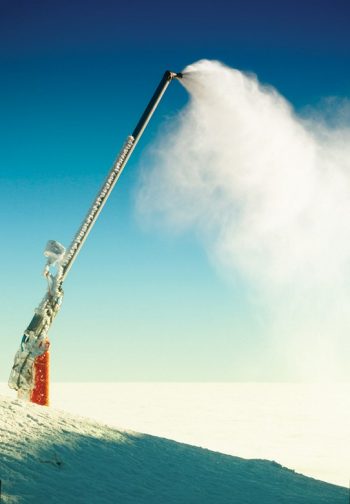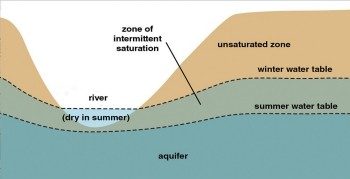Open for Discussion: Artificial Snow: A Slippery Slope
By Adrian Dingle December 2018/January 2019
Are there environmental costs to producing artificial snow?
As average global temperatures continue to creep up, the production of artificial snow is also likely to increase in the near future. Fake snow, which is made with surfactants and bacteria as “seeds” (see related article on the next page), keeps our ski resorts busy, and gives winter Olympic athletes adequate surfaces to compete on. But when any artificial substance is introduced into the environment on a large scale, we should pause to ask the question: “What are the potential effects?” Reflection and scientific analysis can help us anticipate potential problems—in the hopes of avoiding them.
Chemical concerns
Naturally, there are concerns over the chemical impact of the ingredients in snowmaking products on the environment. In the case of one particular product called Snomax, which contains proteins from a bacteria, certain fungicidal proteins in the bacteria reportedly retain their activity. The potential effects on the environment and on human health of distributing these proteins through artificial snow are not yet well understood.
But scientists appear to be more concerned about how artificial snow might affect the natural water cycle in the regions where it is produced.
Ecological concerns
A laundry list of potential effects of artificial snow fall into the category of physical changes to the environment.
To start, artificial snow tends to melt much more slowly than natural snow. This delay can change the normal levels of the water table (see above figure). The water table is the boundary between water-saturated ground and dry ground. Below the water table, the ground is flooded and full of water. In addition, artificial snow can create ice layers on plants and damage them. These effects on the water table and plants have the potential to alter the biodiversity of a local ecosystem.

Also, reservoirs have been created to supply water for snow guns. But these bodies of water have large surface areas and thus increase levels of evaporation. In other places, water has been re-directed and taken from both upstream and downstream sources that normally would have been distributed by nature in a different way. In Arizona, a proposal to use wastewater from sewage to generate artificial snow raised concerns about left-over chemicals from pharmaceuticals and other contaminants in the wastewater.
All of these changes have the potential to disturb the natural balance of the water cycle with unknown long-term effects.
Additionally, operating snow guns takes energy. If that energy is fossil-fuel based, which is highly likely, then making snow is contributing even further to energy-related emissions. And, as you have probably heard, power-plant emissions are contributing to global climate change. Hence the very generation of artificial snow becomes part of the energy problem!
Questions to consider
So, what is the potential long-term impact of all this artificial snow? How will we find out? Is it worth the cost? Are the concerns valid? Can winter resorts find other ways to sustain their businesses?
These are some of the questions surrounding the production of artificial snow that remain unanswered. What solutions can you think of?
Also in this Issue...
Profile interview with Tashica Williams Amirgholizadeh
Blending Chemistry and Law

Having found her niche, Tashica Williams Amirgholizadeh relishes combining both her chemistry and legal expertise in her work as an attorney for Gilead Sciences.



